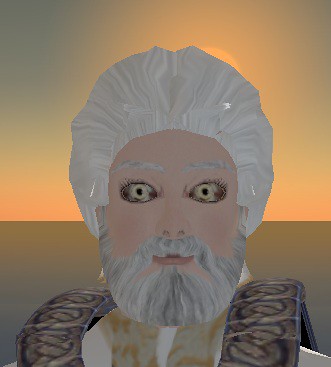Monday, March 09, 2009
EyeBorg
Labels: innovation, smart prosthetics
Saturday, February 14, 2009
TED 2009 Photos
- Steelcase Walkstation
- TED Prize Winners
- My Flickr Set
- Benjamin Button
- Poster Wall
- Aptera
- Regina Specktor
- Electric Motorcycle
- Eric Lewis
- Grandpa Brad Pitt
- Aimee Mullins
- PW Singer
- Bonnie Bassler
Standard Biological Parts
Labels: innovation, Long Beach, TED2009
Friday, February 13, 2009
TED Videos
- TED 2009 Conference Titles
- TED Prize
- Robin w/Einstein
- SixthSense Wearable Computer
- TED 2009 Balloon Eulogy
- Bill Gates Mosquito Launch
- Aptera Test Drive
Labels: innovation, Long Beach, TED2009
Thursday, February 12, 2009
Stelarc
Labels: bionics, performance, stelarc
Wednesday, February 11, 2009
Bionics, or Body Hacking
Labels: etech2008, quinn norton, tim o'reilly
TED Overview
Labels: bionics, innovation, robots, TED2009
Tuesday, October 14, 2008
OK, It REALLY begins
Parallel Kingdom is a geo-located mixed-reality warcraft-like game. See the videos.
Labels: iPhone, mixed reality
Wednesday, July 23, 2008
Social Software Map
Thursday, January 31, 2008
Designing Interactions

Just listened to an iTunesU lecture given by Bill Moggridge, of IDEO, to the Human-Computer Interaction Seminar at Stanford. He talked about his book, Designing Interactions. Three models he talks about are:
- "Enthusiast - Professional - Consumer"
- "Manipulation - Locomotion - Conversation"
- "Feel - Do - Know"
Saturday, January 12, 2008
CES Summary
Wednesday, December 19, 2007
Now, just which singularity are we talking about?
Labels: singularity
Monday, December 17, 2007
Five Scraps of Paper
- SwapDrive - for sharing files over the internet
- Google Webmaster Tools - just what you think
- HandBrake - for converting my home movie DVDs to my iPod to show my mom
- Bones - get the complete first season DVDs
- The Third Man - watch it before going to Vienna
Labels: misc
Wednesday, December 12, 2007
Into the Virtual Blue Yonder
Exodus to the Virtual World: How Online Fun Is Changing Reality
by Edward Castronova
Labels: castronova, virtual world
Saturday, November 10, 2007
Larry Lessig at TED

I just watched Larry Lessig's TED talk. WOW! Not only was the content of his talk brilliant, his use of historical analogy was stunning, and the presentation slides were pure genius. It was a masterful production. I am going to practice his style in my next presentation.
Labels: copyright, creative commons, Lessig, TED
Thursday, November 08, 2007
Don't let the Bozos Grind you Down
- Jump to the next curve.
- Don't worry, be crappy.
- Churn, baby, churn.
- Don't be afraid to polarize people.
- Break down the barriers.
- “Let a hundred flowers blossom.”
- Think digital, act analog.
- Never ask people to do what you wouldn't do.
- Don't let the bozos grind you down.
Labels: guy, innovation, kawasaki
Mapping Life
Now consider hydrocarbon fuels (coal, oil). We are currently throwing more machines at them (digging deeper, oil extraction from shale, etc.). But what if we could change the coal itself? Could we make a bacteria that eats coal or oil and excretes natural gas? Just let them loose in a coal mine or oil shale and harvest the natural gas. Or could we genetically engineer the bacteria in the ocean that absorb carbon out of the air to also absorb hydrogen out of the water and produce hydrocarbons for us? We could build power generation plants that run off of air and water and a domesticated bacteria.
Labels: Enriques, innovation, Juan, SALT
Thursday, October 18, 2007
Everything is Misc/Links are Enough Video
Labels: database, hyperlink, KM, web 2.0, wesch
Video Mashup at Different Scales
Storage is our Past, Present, and Future
- Analog films from the past, when digitally remastered to DVD in the present, give the viewer a higher quality viewing experience than the original viewers experienced.
- The production of a digital full-length movie in the present requires 1 Pedabyte of storage
This will be true not just for the film industry, but for all sectors. For example, the current value to present genealogists of a 17th century parish register of births, marriages, and deaths, far exceeds the value of the register to the priest who recorded the data.
Labels: exponential, film, genealogy, movie, storage
Monday, October 15, 2007
Seeing Magnetic Lines
Scientists already suspected birds' eyes contain molecules that are thought to sense Earth's magnetic field. In a new study, German researchers found that these molecules are linked to an area of the brain known to process visual information.
Labels: birds, magnetic, science
Thinking Second Life into Action
Labels: Second Life
Tuesday, September 25, 2007
IWB on Social Robots
The Huggable is a robotic communication avatar designed for social interactions, education, healthcare and other applications. It is essentially a very cute teddy bear, with a sensitive skin, embedded "intelligence" (i.e., hardware and software), wireless communications and the ability to see, hear, speak, touch and move. But what I find so compelling about The Huggable is that it can operate as an autonomous personal robot and as a semi-autonomous robotic avatar that is part of a human social network, providing a much richer set of interactions to the members of the network than is possible using PCs and similar devices.
There is a lot of activity in intelligent, autonomous, mobile robots for entertainment, education, protection and many other applications. Applications range from helping doctors and nurses perform their duties better (even remotely), to providing assistance to the elderly for improved mobility and strength (e.g., vacuuming, helping in getting out of bed, even companionship). Aging populations around the world are a big driver of personal robot products and applications.
The concept of semi-autonomous robots integrated into a social network is new, at least for me. But once you start thinking about potential applications, many come to mind, in areas as diverse as family communications, healthcare, education and entertainment.
For example, imagine faraway grandparents being able to interact with their young grandchildren who are holding and playing with The Huggable. You can talk, read stories and sing to them. You can (virtually) hug them. You can watch and listen to their reactions as well as sense the way they hold and touch the teddy-bear-like device. Imagine a similar scenario with soldiers stationed around the world, being able to interact with their young children in a far richer, more emotional and satisfying way than a phone conversation. Or imagine the help it could provide children not getting enough nurturing and stimulation from their parents, by enabling family members, professionals or volunteers to get involved in their care.
Labels: robots, virtual world
Virtual World News
Labels: google, vietnam, virtual world
Monday, September 24, 2007
Bin Laden Word Cloud
I registered and uploaded the Gutenberg.org Alice in Wonderland. Guess which words are most frequent before clicking. . . here or here.
Here is some population data to play with from the Census Bureau.
Wednesday, September 19, 2007
Fight for Kisses
Labels: advertisement, avatars, virtual world, visualization
Transformation
| THREE TYPES OF CHANGES | |||
| Traditional | Transitional | Transformational | |
| Motivation for Change | Better, Faster, Cheaper | Fix a problem | Survival,Environment,World Changes, Breakthrough needed |
| Degree of Change | Incremental improvements | Transition from old to new; A to B | Revolutionary |
| Necessary Thinking | Improve | Change management; strategic planning | Radical shifts in mindset/thinking/actions |
| Actions | Manage and control processes | Design the plan; implement the plan | Whole system change, complete overhaul of mindset, paradigms, culture |
Labels: innovation, transformation
Friday, September 07, 2007
Shift Happens
The old one - - -
The new one - - -
Labels: distruptive technology, exponential
Thursday, September 06, 2007
More Women in the Family Tree

The TierneyLab blog over at the NYTimes has an interesting post about the genetic evidence that there are more women in our individual and collective family trees than men. The sociological explanation is that, in the past, lots of men had no offspring (killed in war, killed hunting, killed fooling around, had bad B.O., etc.), thus the remaining (fewer men) had the job to help the unmatched lonely women have children. So, historically, the reproductive men had more children per person (through multiple partners), than reproductive women had per person. Over the generations, descendants of these men married each other. Thus these men would should up in multiple ancestral lines with different female partners. As a result there are fewer male progenitors than female. Polygamous societies contributed to this phenomenon -- as did victorious armies in raping the widows of the defeated armies.
This phenomenon is also evident in the animal kingdom, such as the seal and big cat polygamous societies.
Post Script: A couple of people have reminded me that in previous generations there was a high death rate in childbirth. This meant that a man could have children by two or three wives over the course of his life, in a serial monogamy fashion.
Thursday, August 02, 2007
What is a Luddite?
He then follows with this insight: The internet's output is data, but its product is freedom
Tuesday, July 31, 2007
Virtual Terrorism and Religion
"Just as real-life companies such as Toyota test their products in SL, so could terrorists construct virtual representations of targets they wish to attack in order to examine the potential target's vulnerabilities and reaction to attack," Jones says.
And Corinne pointed me to this MSNBC article on virtual missionary work.
Labels: missionary, religion, terrorism, virtual world
Giving good presentations
- Build Tension
- One Theme per Slide
- Add Pizazz
- Practice
- Be Honest
- Show Enthusiasm
Labels: Business Week, presentations, speaking, TED
Wednesday, July 11, 2007
Digitize my LPs
Labels: digitize, LP, record player, USB
The Virtual World in our Minds
Maybe the reason I am so excited about the whole subject of Virtual Worlds is that in our own way we are beginning to have tools that let us make real the fruits of our imagination.Just as word processors plus blogs empower our use of words, and digital cameras plus Flickr empower our use of images, creation tools plus virtual worlds empower our use of imagination.
Labels: imagination, virtual world
Vizualizing the Universe
Labels: TED, universe, visualization
Tuesday, July 10, 2007
The NICE Dilbert Blog
David Pogue's NYT iPhone Music Video
Labels: David Pogue, iPhone, NYT
Tuesday, July 03, 2007
Big Guns on Prediction Markets
We argue that U.S. regulators should lower barriers to the creation and design of prediction markets by creating a safe harbor for certain types of small stakes markets. We believe our proposed change has the potential to stimulate innovation in the design and use of prediction markets throughout the economy, and in the process to provide information that will benefit the private sector and government alike.
Labels: predicion markets
Monday, July 02, 2007
Ants in a Virtual World
Labels: ant, Second Life, simulation, virtual world
Saturday, June 30, 2007
New Website a'brewin'
http://www.acadac.net
http://www.acadac.us
http://wiki.acadac.net
http://guestbook.acadac.net
Labels: website
Saturday, June 23, 2007
San Francisco Photos
Friday, June 22, 2007
Impact of Exponential Change

I am here at the Supernova Conference where we are discussing what to do with the ubiquitous web. This is difficult because it is hard to understand the impact of exponential change -- Moore's Law being one of the most famous. One of the speakers referred to Ray Kurzweil's 2001 paper entitled, The Law of Accelerating Returns. I know what I will be reading next.
Labels: exponential, growth, internet, Kurzweil, supernova2007
Wednesday, June 20, 2007
Innovation in the White Spaces
Labels: Charlie, EDS, Feld, infrastructure, innovation
Takin' it to the (virtual) streets . . .

New World Notes reports on a protest inside Second Life against the government of Venezuala's Huga Chavez.
Labels: politics, Second Life, Venezuela
JackBe (nimble . . .)
Labels: enterprise, JackBe, web 2.0
Tuesday, June 19, 2007
The Redistricting Game
By exploring how the system works, as well as how open it is to abuse, The Redistricting Game allows players to experience the realities of one of the most important (yet least understood) aspects of our political system. The game provides a basic introduction to the redistricting system, allows players to explore the ways in which abuses can undermine the system, and provides info about reform initiatives - including a playable version of the Tanner Reform bill to demonstrate the ways that the system might be made more consistent with tenets of good governance. Beyond playing the game, the web site for The Redistricting Game provides a wealth of information about redistricting in every state as well as providing hands-on opportunities for civic engagement and political action.
Labels: game, political, redistrictng
Monday, June 18, 2007
Google Page Rank
TED Video
Think Cube
ThinkCube is a complete solution that provides you with all of the tools you need to innovate. It represents the culmination of 10 years of research in creative thinking and synthesizes today's leading creativity tools, techniques, and processes. Whether you use it alone or in a group, ThinkCube trains your brain and lets you exercise your creative muscles.
Our unique ThinkCubation process incorporates many conventional brainstorming techniques and frames innovation in a process that is easy to follow and consistently produces results. ThinkCubation turns the critical but normally passive step of incubation into an active process.
While I doubt this contains ALL the tools I need to innovate, I would like to try it out on one of the tough problems we are having.
Labels: creativity, cube, innovation, thinking
Book Review: Group Genius

The Innovate on Purpose blog has a good review of the book, Group Genius. The review starts:
The path to becoming more innovative often requires debunking a number of myths or commonly held beliefs. For instance, the idea that a lone genius is often responsible for an invention or innovation. In fact, most innovations or inventions spring from the combination of the work of many people. Edison did not create the lightbulb alone, nor did Al Gore invent the internet by himself.
Yet another book based on complexity theory and congruent with Web 2.0.
Labels: collaboration, genius, innovation
Monday, June 11, 2007
Sensor My World

Jonathan's blog points to a nifty little device called a SUN Spot. It is a battery powered, USB connectible, very small programmable computer and sensor pack







